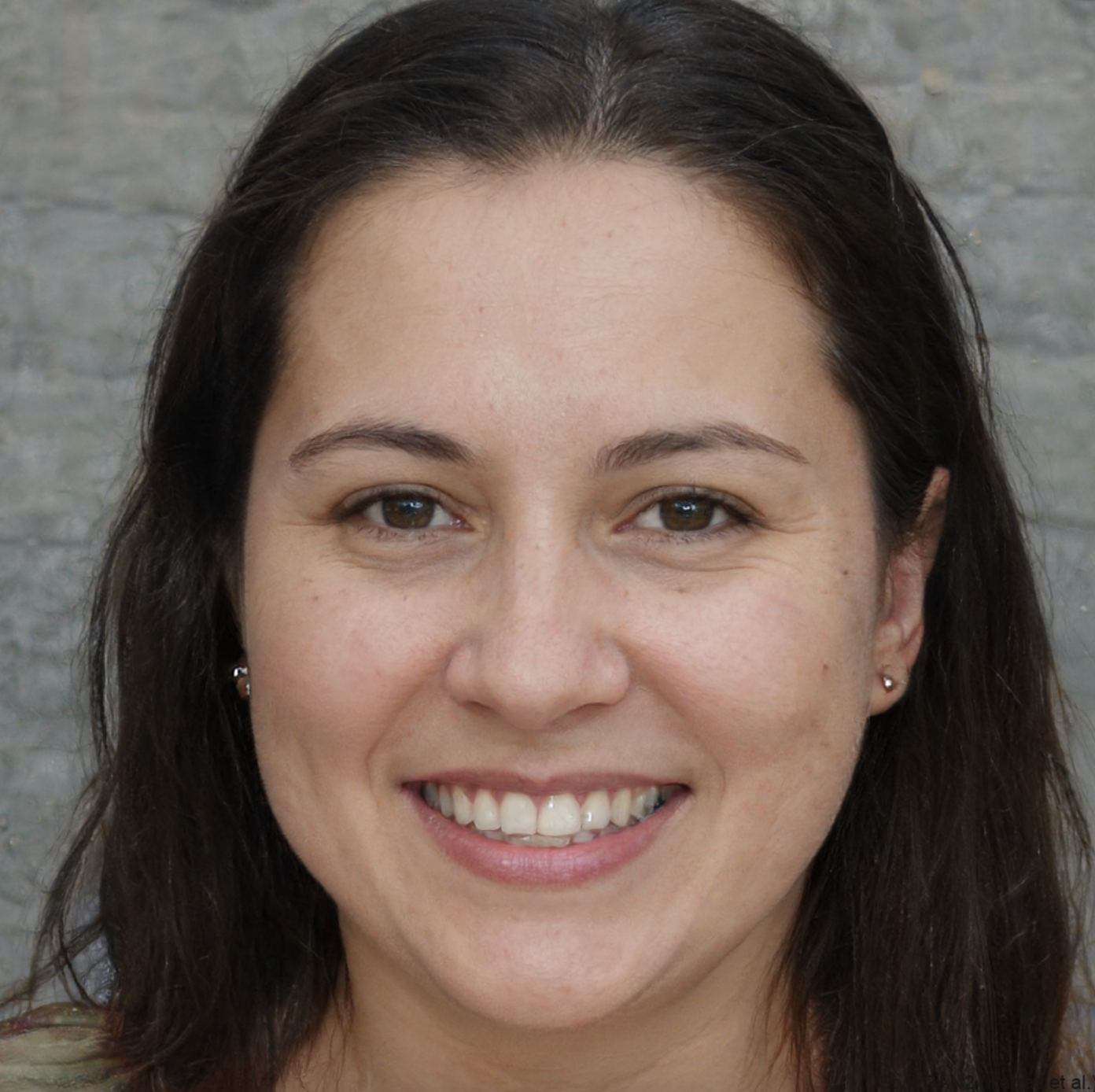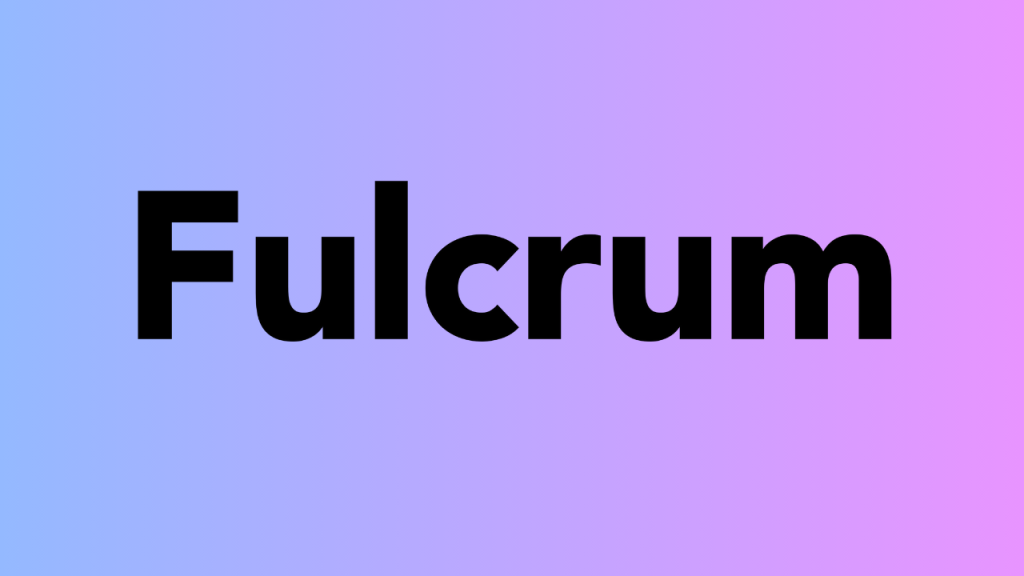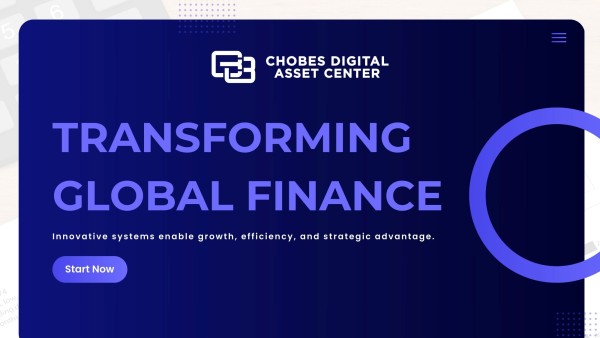Press Release
Faranak Firozan Redefines Multicultural Marketing in Silicon Valley: Bridging Culture, Creativity, and Commerce
California, US, 25th June 2025, ZEX PR WIRE, In the heart of Silicon Valley, where innovation is currency and speed is everything, one marketing expert is shifting the narrative, emphasizing not just how fast a message travels, but how deeply it connects. Faranak Firozan, a seasoned marketing strategist and branding expert based in Santa Clara, is making waves by placing multicultural insight at the core of her marketing philosophy, reshaping the way companies communicate with increasingly diverse audiences.

With over 12 years of experience spanning startups, Fortune 500 companies, and global consumer brands, Faranak has emerged as a leading voice in a growing movement that believes cultural intelligence isn’t a “nice-to-have”, it’s a competitive necessity.
“In today’s market, you’re not just speaking to one audience. You’re speaking to a mosaic of identities, values, and lived experiences,” says Firozan. “Companies that fail to reflect that reality in their messaging will quickly find themselves outpaced by those who do.”
From Tehran to the Bay Area: A Perspective Born of Experience
Faranak’s story is as layered as the strategies she crafts. Born in Tehran and raised in the San Francisco Bay Area, she grew up bridging two worlds; experiencing firsthand the nuances of language, perception, and belonging. That dual identity would become one of her greatest assets in the marketing world.
After earning a degree in Psychology from the University of California, Berkeley, and a Master’s in Integrated Marketing Communications from Northwestern University, Faranak set out to build a career rooted in both logic and empathy. Her academic foundation gave her a sharp understanding of consumer behavior; her life experience gave her an intuitive grasp of culture.
“Multicultural marketing isn’t just about translation. It’s about relevance, tone, and emotional resonance,” she explains. “It’s not just what you say, it’s how you say it and who gets to say it.”
Human-Centered Branding in the Digital Age
Faranak’s approach centers around human-centered branding; deeply understanding the values, fears, and aspirations of a company’s target audience before crafting any strategy. She’s known for developing campaigns that not only drive traffic and boost conversions but also leave lasting emotional impact.
Her work with a wellness startup in San Francisco led to a 300% increase in customer engagement after she implemented a multilingual, story-driven digital campaign that reflected the cultural health traditions of their diverse customer base. In another project, she led a complete rebranding of a consumer tech company looking to enter Latin American markets, advising not only on messaging, but on visual language, user journey, and cross-cultural trust-building.
“Marketing used to be about one-way messaging. Now, it’s about dialogue. You have to listen before you speak,” she notes.
A Voice for Representation in the Industry
Beyond her agency and consulting work, Faranak is a passionate advocate for equity in the marketing industry. She actively mentors young professionals through local accelerators and nonprofit initiatives aimed at empowering women, immigrants, and first-generation college students to pursue careers in branding, communications, and digital media.
She also leads workshops on inclusive storytelling, cultural marketing intelligence, and bias-aware branding; topics that are often underrepresented in traditional marketing programs.
“Diversity in marketing is more than a campaign theme. It starts behind the scenes, with who’s sitting at the table and whose ideas are shaping the narrative,” she says. “Representation drives authenticity.”
Her voice is often sought out by Silicon Valley founders trying to craft messaging that resonates beyond English-speaking markets or who need guidance navigating complex identity-driven topics without resorting to tokenism.
The Silicon Valley Disconnect; and How She’s Fixing It
Despite Silicon Valley’s global reach, Faranak argues that many of its brands still fall short when it comes to authentic, inclusive communication.
“Tech is building for the world, but often marketing as if it’s still speaking to one narrow demographic,” she says. “That gap is both a risk and an opportunity.”
To help bridge that gap, Faranak has developed a proprietary framework called Cultural Context Mapping, a strategic tool she uses with clients to identify cultural blind spots in branding, UX, and communication. The framework integrates research, community input, and behavioral psychology to deliver insights that shape everything from product positioning to social media tone.
Art, Language, and the Power of Story
Faranak’s storytelling prowess isn’t confined to the corporate world. An accomplished painter, she finds inspiration in visual language, using color and abstraction to explore identity and communication without words.
“Art taught me to appreciate what isn’t said: the silence, the space, the nuance,” she reflects. “That’s the same skill you need when building brand stories that speak across cultures.”
She’s fluent in both English and Farsi and conversational in Spanish, which she’s currently studying to deepen her reach into Latin American markets.
This multidimensional approach, combining data, design, psychology, and language, is what makes her work stand out.
Looking Ahead: Scaling Impact
In 2026, Faranak plans to launch a hybrid consultancy and research hub focused on exploring the intersection of culture, commerce, and communication. The initiative will publish white papers, lead brand audits, and offer CMO roundtables focused on inclusive strategy.
The consultancy will also spotlight emerging voices from underrepresented communities in marketing, with a fellowship program that supports first-generation marketers with mentorship and project-based training.
“I want to build not just a practice, but a platform,” she says. “The future of marketing depends on voices we haven’t heard from yet.”
About Faranak Firozan
Faranak Firozan is a marketing strategist, brand storyteller, and multicultural communications expert based in Santa Clara, California. With over a decade of experience, she helps organizations craft inclusive, high-impact campaigns that speak to the heart of today’s diverse audiences. Her clients span wellness, tech, consumer goods, and nonprofit sectors. Faranak is also the creator of her strategic tool Cultural Context Mapping.
About Author
Disclaimer: The views, suggestions, and opinions expressed here are the sole responsibility of the experts. No Digi Observer journalist was involved in the writing and production of this article.
Press Release
Fulcrum Launches Fully Insured Crypto Lending Platform Offering Up to 12% APR on BTC, 13% on SOL and 14% on USDT
Program offers unique option for crypto interest payouts, and crypto backed loans to empower investors to exceed traditional returns
Zug, Switzerland, 4th November 2025, ZEX PR WIRE, Fulcrum Lending, the crypto-backed financial services provider, today announced the launch of its platform. Fulcrum is tailored exclusively for investors, individuals or businesses, looking to achieve higher returns on major crypto (BTC, ETH, BNB, SOL) and stablecoin deposits (USDC, USDT). With annual returns of up to 14%, full-insurance, FINMA license and the interest payouts in the crypto deposited; the platform offers investors a secure, high-yield alternative to traditional savings accounts. The platform has been in beta and alpha stages for the last 6 months and now it’s celebrating its release.

New Alternative to Outpace Inflation
Traditional savings accounts struggle to keep pace with inflation, often leading to a gradual loss of value for investors. Crypto saving accounts do offer higher returns, but they don’t offer insurance for incidents that are common in crypto space. Fulcrum offers an alternative that combines predictable high returns of crypto with a fully insured and licensed platform, allowing investors to grow their savings faster than inflation with peace of mind. This platform is designed to empower individuals with greater financial control, helping them to break away from low-yield savings accounts and achieve more flexibility in their financial plans.
“Fulcrum has always been about empowering our community with innovative ways, and we prove this commitment by providing investors with a high-yield alternative to traditional savings accounts, while giving them a peace of mind with full insurance and regulation” said Matthew Curtis, CEO and Founder of Fulcrum Lending. “We operate a strict regulatory licensing and compliance rigidly in all operations, ensuring your trust in us is well-placed. We are licensed and regulated by Swiss financial authority FINMA. We also hold all customer assets in a qualified custody Fireworks, and we fully insure them. We offer you best rates on the market no matter the market conditions are, and our team is available 24/7”.
Key Features of Fulcrum Platform
- Earn up to 12% APR on BTC and ETH, 13% on SOL and BNB
- Earn up to 14% APR on USDT and USDC
- Borrow USDT at 16% APR
- Predictable rates that don’t change with market conditions
- Full Insurance of user deposits by Lloyd’s of London
- Licensed and regulated by Swiss financial authority FINMA
- Backed by known incubator YCombinator
- Customer assets stored by trusted digital asset custodian Fireworks
- Flexible withdrawal options of daily, monthly, quarterly and semi-annually
Unlike many crypto yield products that rely on high-risk trading strategies, Fulcrum generates returns exclusively from lending activity on platform providing over-collateralized loans, ensuring a lower risk profile for investors. This means the customer deposits are used to fund secured loans, not volatile trading ventures. Fulcrum also guarantees that crypto payouts are held in full reserve and never leveraged—your crypto is always protected and not exposed to additional risk.
“We’re able to offer investors a compelling alternative to traditional savings accounts that’s built on the foundation of our secure, over-collateralized loan book,” said Andrew Owen, Chief Revenue Officer at Fulcrum. “We only have the option of 50% loan-to-value ratio. That means for every 1 BTC worth of credit, we get 2 BTC as collateral.”
How the Fulcrum Interest Account Works
Fulcrum platform accepts deposits in crypto (BTC, ETH, SOL, BNB) and stablecoins (USDC, USDT). Investors will be able to receive monthly interest payouts in the crypto they deposited, giving them the flexibility to tailor their returns to their financial goals. Withdrawals are available after different lock-in periods, differing from 1 day to 6 months. The more the platform users lock-in funds in the platform, more returns they receive.
How the Fulcrum Borrowing Works
With Fulcrum, anyone can have access to borrowing power of up to $1 million by using their crypto assets as collateral, within 24 hours and with no credit history required. In this way they can borrow cash and hold their coins to see them grow while avoiding taxes. Fulcrum offers over-collateralized crypto-backed loans, stored in qualified custody, and only with 50% LTV. The automated platform provides instant funding in USDT.
Availability of Fulcrum platform
Fulcrum platform is now accessible to individuals and corporate investors seeking a secure, high-yield alternative to traditional saving and borrowing options.
About Fulcrum Lend
Founded in 2025 and headquartered in Switzerland, Fulcrum Lending is the pioneer of fully insured crypto-backed lending. Fulcrum’s mission is to build and enable simple, familiar, and novel crypto financial products that increase access to financial opportunities and give consumers more control over their ability to generate long-term wealth.
Fulcrum’s crypto lending products enable its users to receive interest in their idle crypto assets and seamlessly access credit against their crypto portfolios. For more information, visit https://fulcrumlend.com
About Author
Disclaimer: The views, suggestions, and opinions expressed here are the sole responsibility of the experts. No Digi Observer journalist was involved in the writing and production of this article.
Press Release
Finitex Launches New Professional Disposable Gloves
Finitex launches a new generation of FDA-compliant disposable gloves on November 5, 2025, trusted by the healthcare, food service, and beauty industries for their protection, comfort, and tactile sensitivity.
Chino, California, United States, 4th Nov 2025 – Finitex medical-grade nitrile exam gloves meet FDA standards, offering latex-free, powder-free protection suitable for clinical, dental, and laboratory use. Their 4 Mil thickness and micro-textured fingertips provide reliable grip and dexterity for precise, sensitive procedures. The hypoallergenic nitrile material minimizes irritation even during long wear.

“We engineered Finitex gloves to balance barrier protection with tactile feel,” said a Finitex spokesperson. “In healthcare, every detail matters. Our goal was to make protection feel effortless.”
To celebrate the launch of the new Finitex nitrile gloves offering the following promotional pricing:
1000pcs – 4mil Blue Nitrile Gloves $59.99 (Reg $79.99) – Code:BN20
1000pcs – 3.5mil Rose Red Nitrile Gloves $69.99 (Reg $99.99) – Code:RR20
1000pcs – 8mil Black Diamond Pattern Nitrile Gloves $109.99 (Reg $189.99) – Code:BD60
Food Service: Safety and Compliance at Every Step
In the food industry, hygiene and reliability are essential. Finitex food-safe nitrile gloves comply with U.S. FDA food contact regulations and provide excellent puncture and oil resistance, making them ideal for kitchens, catering, and food processing.
Unlike vinyl or latex options, Finitex nitrile gloves maintain their structural integrity under extended use, reducing glove waste and improving workflow efficiency.
“Food handlers rely on gloves that don’t tear, slip, or contaminate,” the spokesperson added. “Finitex delivers reliability that professionals can trust during every shift.”
Beauty and Wellness: Designed for Touch and Expression
For stylists, estheticians, and tattoo artists, precision and comfort define performance. Finitex’s 3 Mil and 5 Mil nitrile glove lines offer flexibility, control, and tactile sensitivity for handling dyes, pigments, or cosmetic products.

The Rose Red 3 Mil Beauty Series provides lightweight comfort and chemical resistance for salon professionals, while the Black 5 Mil Industrial Series offers durability and sleek aesthetics favored by tattoo and grooming experts.
Commitment to Sustainability and Ethical Production
Finitex gloves are manufactured in ISO 9001 and CE-certified facilities, upholding rigorous global quality and ethical standards. The company also integrates eco-efficient production and packaging methods to minimize environmental impact.
“Sustainability and safety are not opposing goals—they’re part of the same vision,” said the Finitex representative. “Our responsibility is to protect people and the planet simultaneously.”
About FINITEX:
Founded in 2017, Finitex is a U.S.-based brand of Titans Medicare Inc., specializing in high-performance nitrile disposable gloves for professionals in healthcare, foodservice, beauty, and industrial fields. Finitex products meet international standards, including FDA ertifications.The company operates in North America, the EU, China, and Thailand, employing over 1,000 people across four global locations.
Media Contact
Organization: Titans Medicare Inc
Contact Person: Finitex Cecilia
Website: https://www.titansmedicare.com/
Email:
finitex@titansmedicare.com
City: Chino
State: California
Country:United States
Release id:36472
The post Finitex Launches New Professional Disposable Gloves appeared first on King Newswire. This content is provided by a third-party source.. King Newswire makes no warranties or representations in connection with it. King Newswire is a press release distribution agency and does not endorse or verify the claims made in this release. If you have any complaints or copyright concerns related to this article, please contact the company listed in the ‘Media Contact’ section
About Author
Disclaimer: The views, suggestions, and opinions expressed here are the sole responsibility of the experts. No Digi Observer journalist was involved in the writing and production of this article.
Press Release
Chobes Digital Asset Center Advances Global Compliance Strategy
Chobes Digital Asset Center reinforces its brand with a compliance-first strategy and institutional operations focused on transparency and trust.
Chobes Digital Asset Center, a global digital asset trading and technology platform, has announced a strategic initiative to strengthen its international presence through a compliance-centered operational framework.
This approach reflects the company’s long-term vision of aligning innovation with regulatory integrity, establishing Chobes as a trusted name in responsible digital finance.
Compliance as the Foundation of Growth
At the core of Chobes’ strategy lies a belief that sustainable innovation in finance must be built on compliance and accountability.
The company has enhanced its internal governance systems, introducing advanced regulatory monitoring, audit readiness, and standardized reporting mechanisms to support transparent and secure operations across all regions.
Nathan Grayson, Director of Compliance Affairs at Chobes Digital Asset Center, commented:
“Compliance drives confidence. Our global operations are designed to ensure clarity, accountability, and user protection across every market we serve.”
Institutional Operations and Global Trust
Built on institutional-grade infrastructure, Chobes integrates rigorous oversight, independent reviews, and adaptive risk controls to maintain reliability and efficiency.
This structure ensures operational excellence while reinforcing the company’s reputation as a responsible, regulation-aligned platform for both individual and institutional participants.
By maintaining strict adherence to global compliance expectations, Chobes Digital Asset Center continues to advance its mission of combining innovation with integrity — shaping a brand defined by transparency and trust.

About Chobes Digital Asset Center
Chobes Digital Asset Center is a global digital asset infrastructure platform focused on compliance, security, and intelligent trading solutions.
Through its governance-driven operations and commitment to transparency, Chobes continues to promote responsible innovation and strengthen user trust across the digital financial ecosystem.
Further Information and Official Resources:
https://www.chobes.digital
https://www.chobes-digital.com
https://www.chobes-overview.com
https://www.chobes-inspect.info
https://www.chobes-asset.center
Media Contact
Organization: Chobes
Contact Person: Nicole Foster
Website: https://chobes.com/
Email: Send Email
Country:United States
Release id:36529
The post Chobes Digital Asset Center Advances Global Compliance Strategy appeared first on King Newswire. This content is provided by a third-party source.. King Newswire makes no warranties or representations in connection with it. King Newswire is a press release distribution agency and does not endorse or verify the claims made in this release. If you have any complaints or copyright concerns related to this article, please contact the company listed in the ‘Media Contact’ section
About Author
Disclaimer: The views, suggestions, and opinions expressed here are the sole responsibility of the experts. No Digi Observer journalist was involved in the writing and production of this article.
-
Press Release1 week ago
XNAP Token Set to Launch on Major DEX Platforms This November 2025 — Fueling the Synapse Power Ecosystem
-
Press Release4 days ago
Department of Skill Development, Entrepreneurship and Livelihood, Government of Karnataka Is set to host the Inaugural Edition of the Bengaluru Skill Summit 2025
-
Press Release7 days ago
MiniDoge shines at TechCrunch Disrupt boosting innovation in AI and Web3
-
Press Release6 days ago
Business Consulting Agency Empowers Los Angeles Businesses with Over 20 Years of Proven Expertise
-
Press Release4 days ago
PepePort Transforms Meme Finance PPORT Presale will be LIVE Monday 3rd November 2025 – Access to the Ultimate Meme Economy Opens Monday
-
Press Release3 days ago
The “ Finest Cultural Gifts from China ” Cultural and Tourism Trade Promotion Activity (Intangible Cultural Heritage and Time-Honored Brands Special ) was held in Kaifeng.
-
Press Release7 days ago
ReyVend Unveils Next-Generation AI Vending and Smart Cooler Platform, Pioneering the Future of Automated Retail
-
Press Release6 days ago
Illumination Consulting Marks Over 25 Years of Excellence in Digital Strategy and Business Growth from Its Beverly Hills Headquarters



